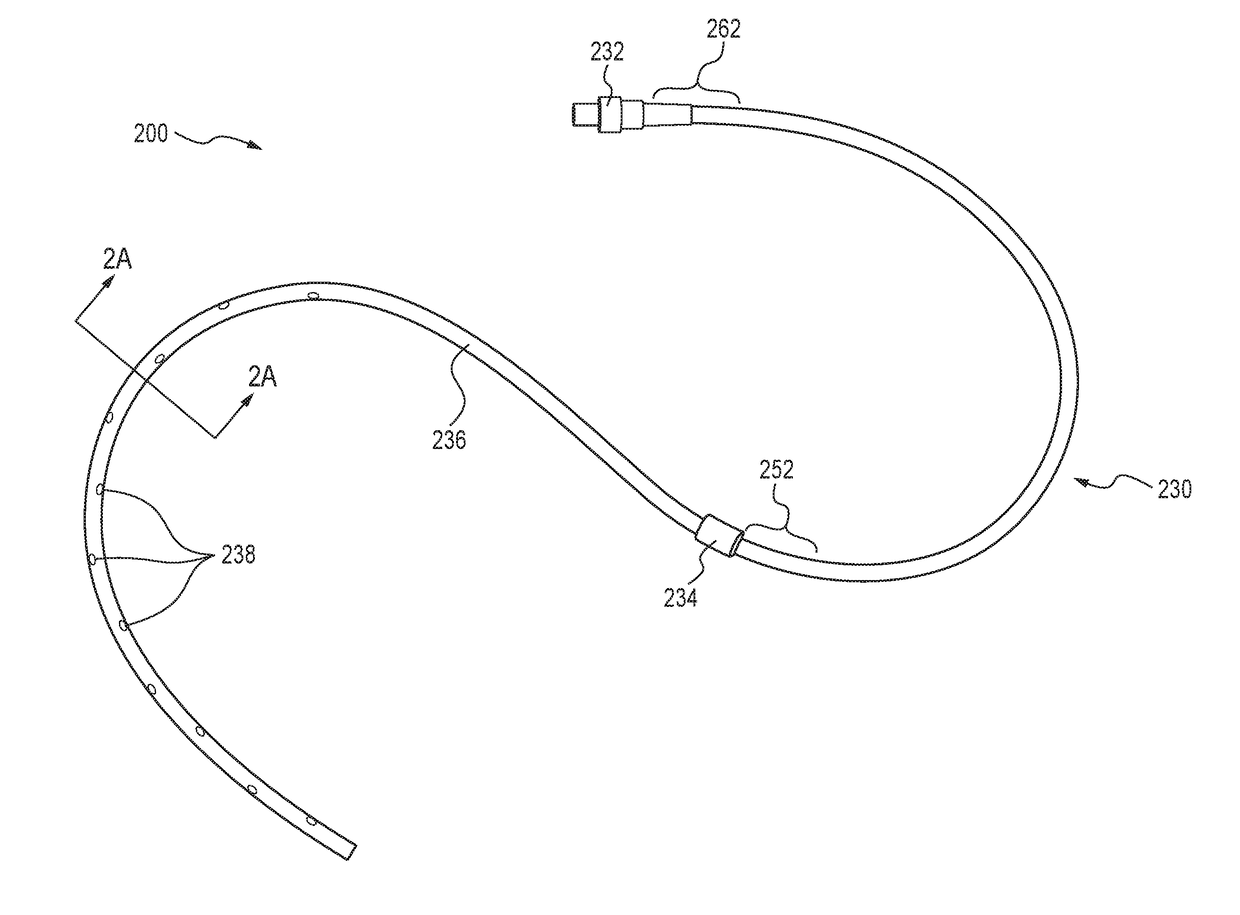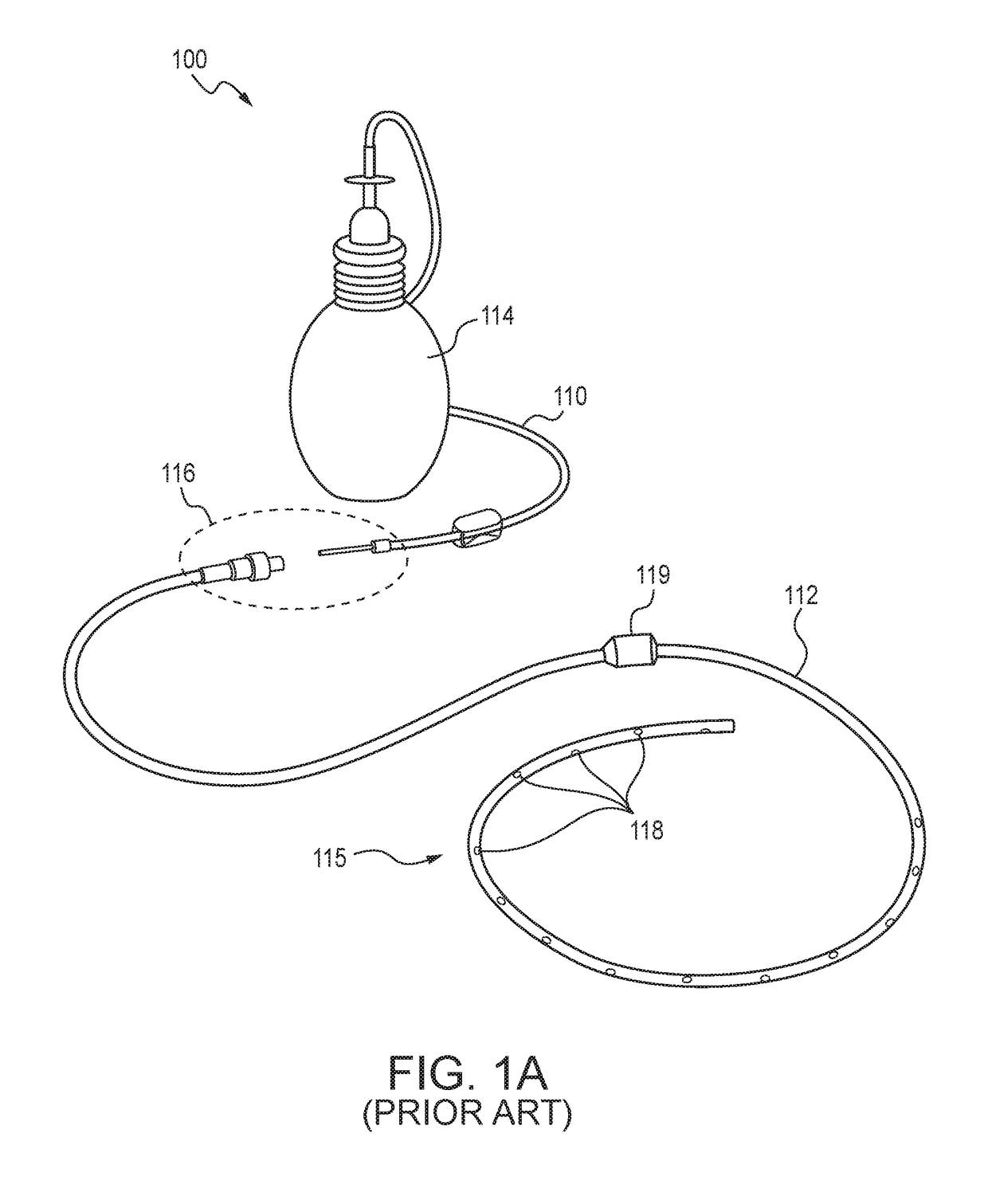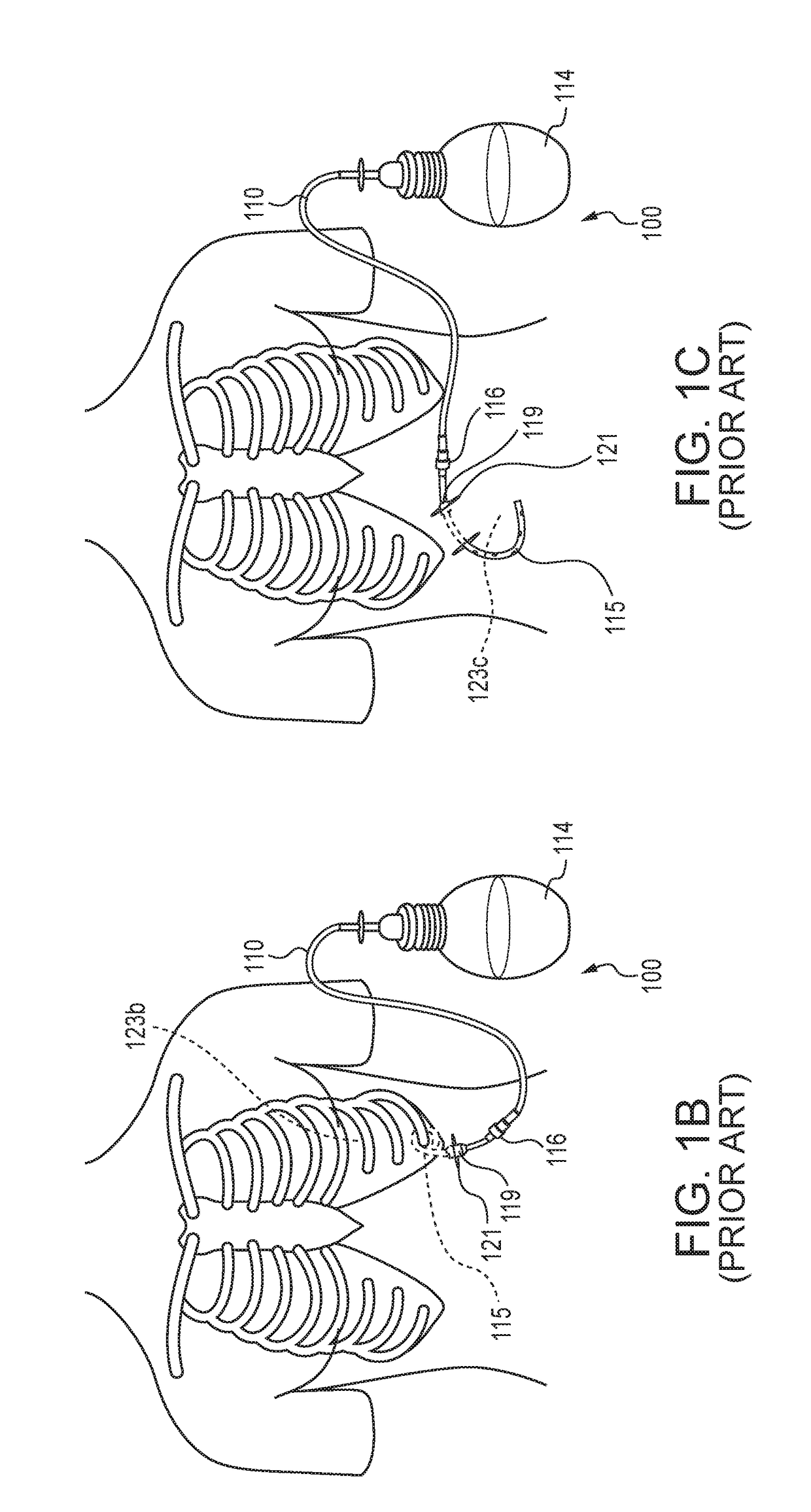Body cavity drainage catheter with microtextured surface
a catheter and body cavity technology, applied in catheters, suction drainage containers, other medical devices, etc., can solve the problems of reducing the quality of life of patients, excessive fluid accumulation in the pleural space, and substantial morbidity and some mortality
- Summary
- Abstract
- Description
- Claims
- Application Information
AI Technical Summary
Benefits of technology
Problems solved by technology
Method used
Image
Examples
Embodiment Construction
[0017]Various embodiments are described below with reference to the drawings in which like elements generally are referred to by like numerals. The relationship and functioning of the various elements of the embodiments may better be understood by reference to the following detailed description. However, embodiments are not limited to those illustrated in the drawings. It should be understood that the drawings are not necessarily to scale, and in certain instances details may have been omitted that are not necessary for an understanding of embodiments disclosed herein, such as—for example—conventional fabrication and assembly.
[0018]Embodiments here may use the illustrated examples of microtextured (regularly patterned, irregularly patterned, or unpatterned) surfaces. They may include or exclude surface treatments and / or embedded / elutable antimicrobial compounds that may enhance the microbe colonization-inhibitory function of the described embodiments' physical topography. For embodi...
PUM
 Login to View More
Login to View More Abstract
Description
Claims
Application Information
 Login to View More
Login to View More - R&D
- Intellectual Property
- Life Sciences
- Materials
- Tech Scout
- Unparalleled Data Quality
- Higher Quality Content
- 60% Fewer Hallucinations
Browse by: Latest US Patents, China's latest patents, Technical Efficacy Thesaurus, Application Domain, Technology Topic, Popular Technical Reports.
© 2025 PatSnap. All rights reserved.Legal|Privacy policy|Modern Slavery Act Transparency Statement|Sitemap|About US| Contact US: help@patsnap.com



